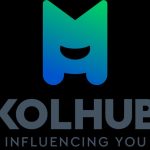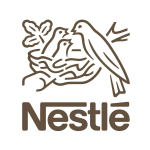By Jeraldine Phneah, Account Manager, Socialbakers
With Influencer Marketing being one of the top marketing trends in 2018, brands have grown increasingly eager to shell out for sponsored posts by social media influencers, sometimes paying Instagram influencers tens of thousands of dollars for a single ad.
While influencer marketing has obvious benefits, marketers currently face several challenges in getting the most value out of this tactic. Finding the right influencer remains one of the top challenges faced by marketers. According to Econsultancy, marketers still struggle the most with identifying the right influencers, with 73 percent stating that it was the biggest challenge in working with influencers.
The recent incident where Daryl Aiden Yeo was caught posting stock image library content, indicating it was his own work, has also sparked concerns about authenticity and brand safety. Choosing the wrong influencer can do more harm than good to a brand and only by their doing due diligence can brands weed out the influencers with fake followers or fake content.
How can you make sure you’re investing time and money in the influencers that really resonate with your audiences? Here are some questions to guide your decision making:
1. Does the influencer have a history of buying followers or engagement?
Several marketers are concerned that influencers could be inflating one’s stats by buying fake followers. Fake followers are often machine-generated profiles fueled by “bots” or software applications that mimic human behaviour. They can “like” or comment on posts, giving the impression of popularity or engagement.
Last week, Unilever committed to never work with influencers who buy followers and to never buy followers for its brands. They also called for social media platforms to increase transparency and “help eradicate bad practices throughout the whole ecosystem.”
The implications for brands? Besides misleading consumers, bots are a waste of your advertising dollar, since brands are spending to reach eyeballs that do not exist and to gain meaningless investment. This makes it even harder to gauge return on digital investments.
A common question from marketers is how can you measure if an influencer you have pre-selected has bought followers? There is a data-driven approach which you can employ to find the answer. Looking at historical data is one of the best ways to identify if an influencer has fake following.
First of all, one can analyze an influencers’ performance in the past 3 months and look for spikes in their fan growth. Could these weeks with unusually high growth be attributed to fake followers?

To prove the theory, we took a closer look at Andrea Chong’s (@dreachong) profile. We found that the spike in followers correlated and the data told us that there is a high chance that Andrea Chong (@dreachong) did not purchase any fake followers. Instead, the increase in her audience size is due to great content published during this period.
What about engagement? How can you tell if an influencer has purchased engagements on his or her post? One of the ways would be to use Socialbakers’ Promoted Post Detection technology. This technology uses the power of AI to analyze how audiences react to a post and predicts if a post was boosted for not. It can be used for any brand page or influencer page and offers up to 96% accuracy.
As seen below, Andrea Chong’s two recent top posts in May were marked as organic content, clearly showing she did not buy engagement for these two posts. The posts were simply organic content which performed really well, better than 90 percent of all her organic posts in the past 6 months.
Of course, when an influencers’ post is marked as promoted, one should also check with them if they really did purchase bots or simply boosted the post via Instagram.
The latter could sometimes be due to their client’s request to put money behind the branded content.

2. Understand how relevant the influencer is for my audience
Beyond looking at their quantitative performance in fan growth and engagement, it is also important to know if there is an alignment between the interests of your target audience and the influencer.
Many brands simply choose macro-influencers with the biggest following without understanding how relevant they are to their audience. However, if your influencer pick doesn’t align with your audiences’ interests, lifestyle or behaviour, your time and money will be wasted.
Social media performance data also tells us that it is important for brands to engage micro-influencers. Micro influencer accounts boast up to a 60% increased engagement rate compared to macro influencers. They also have a 20% higher conversion rate. The challenge with working with micro-influencers is first, finding them. How can brands find the right influencers?
First of all, they can find influencers by age, gender, interest and audience size. For instance, a beauty brand in Singapore who does not necessarily wish to engage influencers who are already working with similar brands, may wish to simply search for young women based in Singapore who are interested in beauty.
The brand could then benchmark them with other influencers by looking at their audience size, engagement rate, posting activity and interactions per 1000 fans. They could also cross check to see if they have worked with competitors by studying their commonly used hashtags and mentions.

Brands can also look for influencers by looking at similar brands and who they have engaged for their campaigns. For instance, a gym or sports brand in Singapore may wish to look at who has mentioned a similar brand, say for instance Adidas Singapore or Nike Singapore, or used their hashtag in their profiles.
This would help the brand identify the influencers who are already interested in and talking about sports and fitness and whose audiences are likely to be interested in this topic as well. They may even have experience in producing branded content with Adidas or Nike and can use this experience to help create great content for the sports brand or gym in question.

3. Who really produces results?
Finally, after engaging influencers, it is important to assess them to ensure they are really generating value for the brand or campaign. Understanding their performance will help the brand determine if they should engage them again and whether their investment has yielded the right results for the brand.
If a brand’s campaign objective is to raise awareness, they may wish to assess influencers based on metrics such as engagement and reach.
Looking at the recent campaign which Genting Dream Cruises did with micro-influencers in Singapore, it’s easy to assess who brought in the most engagement with their posts and thus to decide which influencers to work with again.
Looking at the chart below, the top three influencers were certainly not those with the highest number of fans. However, their posts did generate high engagement indicating that it is likely that their posts about Dream Cruises resonated with the audience.

To truly leverage influencer marketing and to make the most of it, brands should not simply jump on the bandwagon but rather focus on how they can find the right influencers who are credible, relevant and who can generate the right results for their brand.
MARKETING Magazine is not responsible for the content of external sites.









